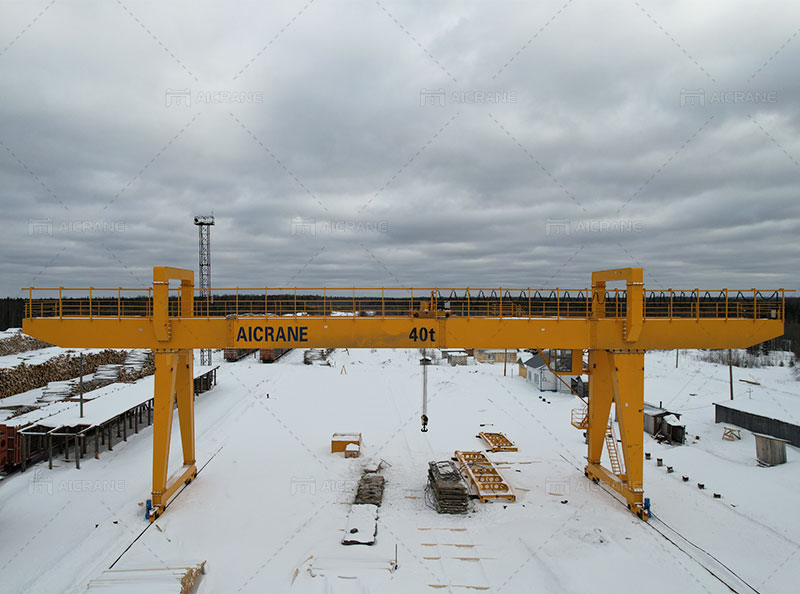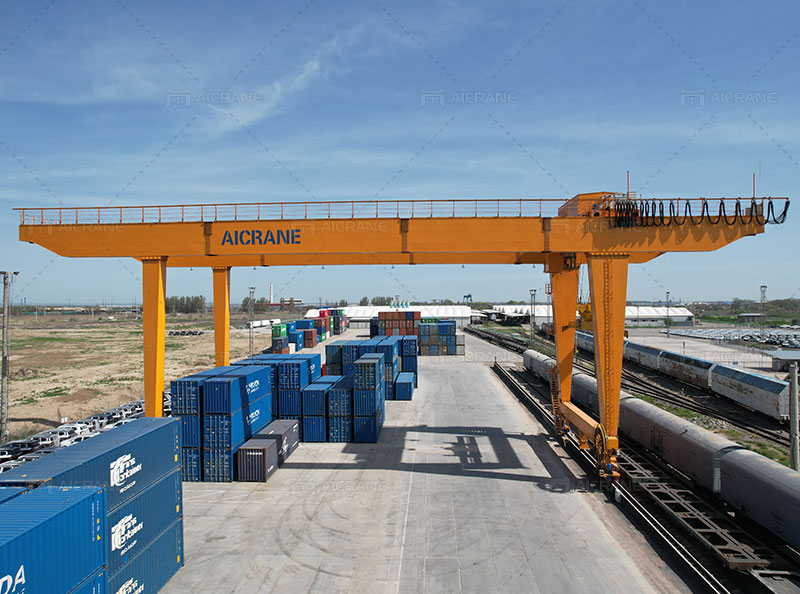Gantry cranes are vital pieces of equipment used in various industries to lift, move, and position heavy loads. Their versatility and efficiency make them indispensable in manufacturing, construction, shipping, and warehousing operations. Understanding the different designs and configurations of industrial gantry cranes is essential for selecting the right equipment for specific applications. This article explores the various types of industrial gantry cranes, their configurations, and their unique features, providing insights to help businesses make informed decisions.

What is a Gantry Crane?
A gantry crane is a type of lifting equipment characterized by its overhead structure supported by vertical legs, which run on wheels or tracks. This design allows the crane to span a designated area, enabling it to lift and move materials across large distances. Gantry cranes can be classified into several categories based on their design, capacity, mobility, and intended use.
Types of Gantry Cranes
1. Single Girder Gantry Cranes
Single girder gantry cranes are among the most commonly used types in industrial settings. They consist of a single horizontal beam (the girder) supported by two vertical legs. The simplicity of their design makes them lightweight and cost-effective, suitable for light to moderate lifting tasks.
Advantages:
- Lower cost compared to double girder designs.
- Easier to install and maintain.
- Ideal for smaller workshops and warehouses with limited space.
Applications:
- Light manufacturing.
- Assembly lines.
- Maintenance and repair operations.
2. Double Girder Gantry Cranes
The Aicrane double girder gantry cranes feature two parallel beams, providing increased strength and stability. This design allows for higher lifting capacities and greater span lengths, making them suitable for heavy-duty applications.
Advantages:
- Higher load capacity compared to single girder cranes.
- More robust and stable, suitable for demanding environments.
- Can accommodate larger lifting equipment, such as hoists and trolleys.
Applications:
- Heavy manufacturing and construction.
- Steel and metal fabrication.
- Shipping and logistics.
3. Portable Gantry Cranes
Portable gantry cranes are designed for mobility, allowing users to easily relocate the crane as needed. These cranes typically have adjustable height and span, making them versatile for various applications.
Advantages:
- Lightweight and easy to transport.
- Quick assembly and disassembly.
- Flexibility to work in different locations.
Applications:
- Maintenance and repair tasks in various industries.
- Construction sites where temporary lifting solutions are needed.
- Shipping yards for loading and unloading cargo.
4. Rail-Mounted Gantry Cranes
Rail-mounted gantry cranes (RMG crane) are specifically designed to operate on tracks, providing precise control and stability. These cranes are often used in container handling operations at ports and intermodal facilities.
Advantages:
- High mobility and efficiency in container stacking and transport.
- Ability to handle heavy loads over long distances.
- Enhanced safety features for operations in busy environments.
Applications:
- Container terminals.
- Intermodal freight operations.
- Large-scale shipping and logistics facilities.

5. Rubber-Tyred Gantry Cranes
Rubber-tyred gantry cranes (RTG crane) combine the mobility of wheeled cranes with the stability of gantry designs. They are equipped with rubber tires, allowing them to move freely across various surfaces without the need for tracks.
Advantages:
- High mobility and maneuverability in tight spaces.
- Suitable for outdoor applications and uneven surfaces.
- Capable of handling heavy loads efficiently.
Applications:
- Container handling at ports.
- Outdoor material handling in industrial settings.
- Warehousing and distribution centers.
Configurations of Gantry Cranes
1. Fixed Gantry Cranes
Fixed gantry cranes are installed in a permanent location, typically used for repetitive lifting tasks in specific areas. Their fixed position allows for stable operation and maximizes the effective use of space.
Applications:
- Assembly lines.
- Manufacturing plants.
- Maintenance facilities.
2. Adjustable Gantry Cranes
Adjustable gantry cranes feature mechanisms that allow the height and width of the crane to be modified. This flexibility makes them suitable for various lifting tasks and different sized loads.
Applications:
- Workshops requiring different lifting heights.
- Environments where multiple load sizes are handled.
3. Articulating Gantry Cranes
Articulating gantry cranes have articulated arms that enable them to reach difficult-to-access areas. This design is particularly useful for lifting loads around obstacles.
Applications:
- Construction sites with limited space.
- Maintenance tasks in cramped environments.
Key Considerations for Choosing a Gantry Crane
When selecting an industrial gantry crane, several factors should be considered to ensure it meets operational needs:
- Load Capacity: Determine the maximum weight that the crane will need to lift and select a model that can safely handle that load.
- Span Length: Consider the width of the area where the crane will operate. Ensure that the chosen gantry crane can cover the necessary distance.
- Height Requirements: Evaluate the height needed for lifting tasks. Ensure the crane can achieve the required lifting height.
- Mobility: Decide whether a fixed or mobile crane is more suitable for your operations. Portable and rubber-tyred cranes offer greater flexibility.
- Operating Environment: Consider the environment in which the crane will be used. Outdoor applications may require cranes with weather-resistant features.
- Safety Features: Ensure that the gantry crane includes necessary safety features, such as overload protection, emergency stop functions, and proper hoisting mechanisms.
Conclusion
Understanding the different industrial gantry crane designs and configurations is crucial for optimizing material handling operations. Each type of gantry crane offers distinct advantages and applications, making them suitable for various industrial environments. By evaluating load capacity, span length, mobility, and operating conditions, businesses can select the right gantry crane that enhances efficiency, safety, and productivity. Investing in the appropriate crane not only improves workflow but also contributes to the overall success of industrial operations. As industries continue to evolve, gantry cranes will remain a key player in lifting and moving heavy loads, paving the way for advancements in technology and design.